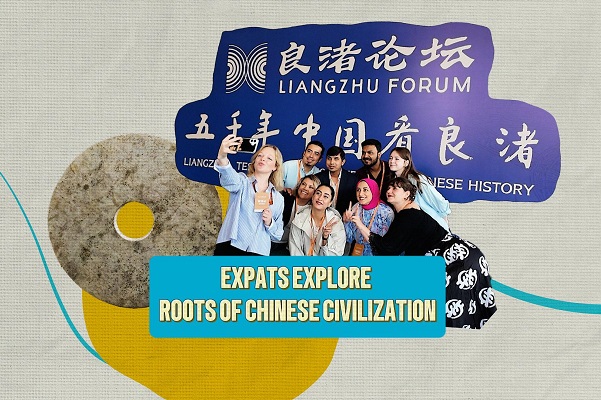Antonio Jose Mezcua Lopez: Painting bridges of understanding between China and Spain
Black and white are the defining colors of traditional Chinese ink painting. Yet in Granada, Spanish artist Antonio Jose Mezcua Lopez offers a bold reinterpretation. Merging classical Chinese aesthetics with vibrant color, Lopez creates a compelling dialogue between Eastern and Western artistic traditions. In addition to being a painter, Lopez is also a professor in the Department of General Linguistics and Literary Theory at the University of Granada. Through both his art and academic work, he aims to foster a deeper understanding of China and its culture among Spanish people.
Lopez's fascination with Chinese art began in the 1990s when he stumbled upon a book of Song Dynasty (960-1279) painting reproductions. Among them, Guo Xi's "Early Spring" (Zao Chun Tu) left a lasting impression. That moment sparked his lifelong interest in traditional Chinese art, culminating in a transformative opportunity to study at the China Academy of Art in Hangzhou, east China's Zhejiang Province.
At the Academy, Lopez immersed himself in classical Chinese painting techniques such as learning to control ink flow, paper absorption, and brushstrokes by copying the works of renowned Chinese masters. Looking back, he considers this experience foundational. "I consider myself a Chinese painter. A Spanish Chinese painter," he said.
The works currently on display in the gallery draw inspiration from the Chinese philosophical concepts of "Xuan" and "Ziran," often translated as "mystery" and "spontaneity." When producing these paintings, Lopez just went with the flow, allowing the ink to flow freely across the paper without imposing a fixed outcome. This mirrored the Taoist principle of wu wei (non-action), which is a harmonious surrender to the moment. He explained that the painting evolves as he works, with him adapting to it, not the other way around.
Lopez also experiments with innovative methods and materials. One technique involves pasting wrinkled, shrunk paper onto a base layer, applying ink, and using a mini fan to dry before adding colors. He also explores video art, applying the same concepts of Chinese philosophy to create moving paintings.
Despite his deep immersion in Chinese techniques, Lopez's Spanish roots and Western artistic influences remain present. He cites the 20th-century avant-garde, particularly Russian painter Wassily Kandinsky and the Czech painter Frantisek Kupka as major influences. Like many modernists, Lopez explores the relationship between music, color, and spirituality, which is a pursuit that finds resonance in both Western abstract art and traditional Chinese art.
In Chinese ink painting, or "shui mo hua," the limited palette of black, white, and subtle shades of grey forces the artist to develop a heightened sensitivity to tonalities. This has sharpened Lopez's own sense of color. He tries to create a dialogue between Spanish and Chinese traditions by exploring the mysticism of color and the tension between warm and cool tones.
For Lopez, painting, especially abstract painting, is a universal language that everyone can connect with. He noted that while people often say abstract art is beautiful but hard to understand, in his view there is nothing to understand, only to feel.
Beyond his artistic practice, Lopez is committed to building cultural bridges. He believes his role in Spain is to promote a more authentic and nuanced understanding of China from its rich traditions and diverse peoples to its cultural heritage that goes back 5,000 years. At the University of Granada, he brings his personal experiences into teaching to give students a true understanding of China that is beyond Western media narratives.
Looking to the future, Lopez emphasizes the importance of continuing cultural exchanges between China and Spain and building bridges of understanding. "In the end, we are all human beings, and that is what matters," he said.
-
Hangzhou launches preparations for 5th Global Digital Trade Expo
November 6, 2025
-
Hangzhou Marathon champion decided by milliseconds
November 3, 2025
-
Hangzhou Botanical Garden unveils splendor of autumn chrysanthemums
October 30, 2025
-
International visitors find resonance at Liangzhu site
October 20, 2025



